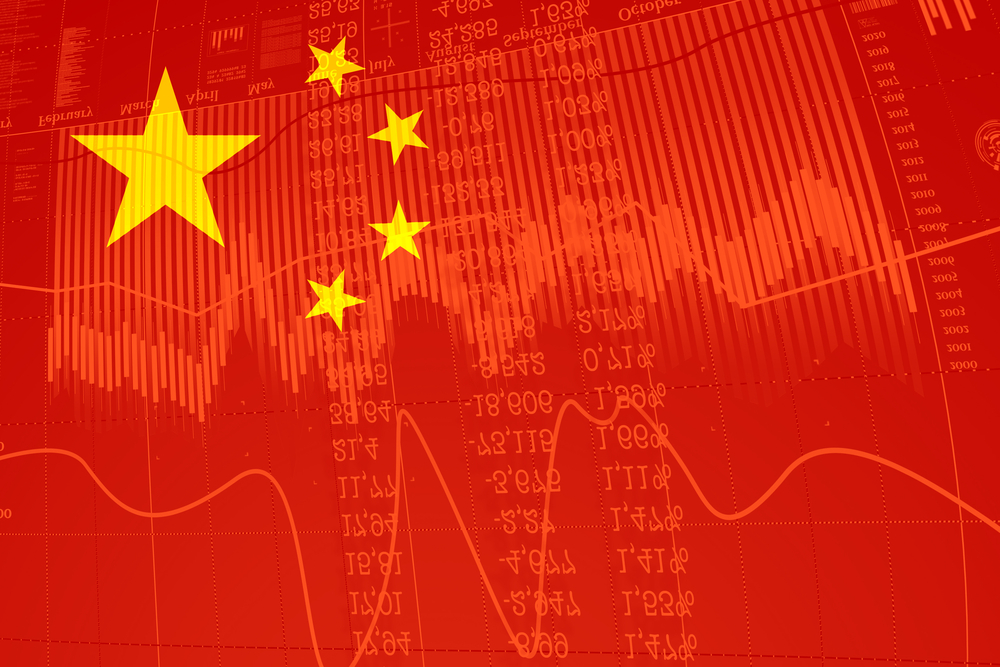Investors are starting to reduce their emerging markets equity allocations as fears of a growth slowdown in China intensify, cutting back on significantly overweight positions they built during the country’s rapid economic recovery from coronavirus last year.
Investors are starting to reduce their emerging markets equity allocations due to fears of a growth slowdown in China, cutting back on significantly overweight positions they built during the country’s rapid economic recovery from coronavirus last year.
Fund managers now rank a slowdown in China as the fourth biggest tail risk overall, behind inflation, a taper tantrum, and asset bubbles, according to a monthly Bank of America survey in July.
Investors have responded by slashing their emerging markets equities positions, with allocations falling 17 percentage points to a net 14 per cent overweight. This is the lowest average overweight since October 2020.
Last year, the MSCI China notched up returns of 30 per cent for the full year.
So far in 2021, the MSCI China index, which includes both onshore and offshore equities, has risen by only 1.1 per cent until 30 June.
In contrast, US and European equities have stormed ahead amid ongoing vaccination programmes and economic restarts.
A combination of slower credit growth in China disappointing economic growth figures, and a spate of regulatory crackdowns on the tech and financial sectors have prompted fears from investors about the outlook for investing in the country.
In July, the growth outlook took another hit after an unexpected shift in policy from China’s central bank. The People’s Bank of China decided to loosen monetary conditions by cutting banks’ reserve requirements, reversing the policy of gradual monetary and fiscal tightening it has pursued since late last year.
In a recent note, BlackRock Investment Institute explains the shift by pointing to signs of growth decelerating in recent months, including lower-than-expected gross domestic product (GDP) growth figures in the second quarter of 2021.
China’s GDP expanded by 7.9 per cent year-on-year in the April-June quarter, which is significantly lower than the record 18.3 per cent growth registered in the first quarter of 2021.
“This may have given Beijing the incentive to frontload policy support in order to stave off a potentially more pronounced slowdown, especially as inflation pressures have eased, in our view,” writes BlackRock Investment Institute.
The world’s largest asset manager believes there is potential for “more broadbased loosening in the near term”, including fiscal and monetary measures.
However, BlackRock believes that recent loosening is unlikely to signal a major step-change in China’s policy.
“We see China’s recent policy loosening as an important shift to a modestly more supportive stance for the near term, yet don’t expect the overall hawkish bias to change as it is crucial in China’s focus on quality growth in the medium term,” says BlackRock Investment Institute.
BlackRock expects that China will leave its hawkish stance mostly unchanged in the medium-term, as the country pursues new goals.
“We see an overall hawkish policy stance as critical to China’s “quality revolution” – an effort to move away from an overriding effort on the quantity of growth toward a greater focus on the quality of growth,” writes BlackRock.
This includes building a productive Chinese economy, with each unit of incremental GDP generating proportionately less pollution, inequality and financial risk.
According to BlackRock Investment Institute, ongoing reforms “could weigh on near-term growth but potentially improve its quality in the long run”,
BlackRock remains tactically neutral, but strategically positive on Chinese equities.
Lyxor Asset Management expects a “regional economic rebalancing” to get underway in the third quarter of 2021, with China and emerging markets in Asia becoming a “weaker growth contributor”.
“We tactically favour EM ex-China stocks, to leverage on accelerating vaccinations, but do not expect sustainable outperformance vs DM,” write Lyxor’s CIO, Florence Barjou, and head of Market Research, Jeanne Asseraf-Bitton in a recent note.
Lyxor’s tactical call concentrates on emerging markets excluding China. This is due to an expected rebalancing of thegrowth contribution that the firm believes will benefit Europe, the Middle East and Africa, and Latin America.
“We anticipate better opportunities in China after the summer when the authorities tightening should begin to ease,” write Barjou and Asseraf-Bitton.
However, these opportunities could be hampered by a recent spate of regulatory crackdowns against China’s domestic technology firms, including Alibaba and Ant Group. Most recently, China announced it would be launching a cybersecurity review of ride-hailing app Didi, after banning the firm’s app from app stores.
Investors should expect to face higher political risks in China, says Ronald Chan, founder of Hong Kong asset management firm Chartwell Capital.
“Whilst the political risk has risen when investing in Chinese Big Tech, especially for those listing in the US, given the rising geopolitical tensions between China and the US, there should be no surprises in recent events,” says Chan.
“The Chinese government has made it very clear they want to reign in the dominance of Big Tech.”
It is not only Chinese regulators that are scrutinising technology companies over their emerging monopolies, notes Chan.
“Western governments are now looking in the rear-view mirror with regards to their tech giants, where the winner-takes-all business model has changed the commercial landscape. This is China’s equivalent, with an overlay of political agenda,” he says.
Chan continues: “Investors need to look at the long-term prospects of the business, and keep in mind that whilst the Chinese government wants to manage the growth of big tech, they also do not want to disenfranchise a service that is already embedded into many Chinese daily lives.”







